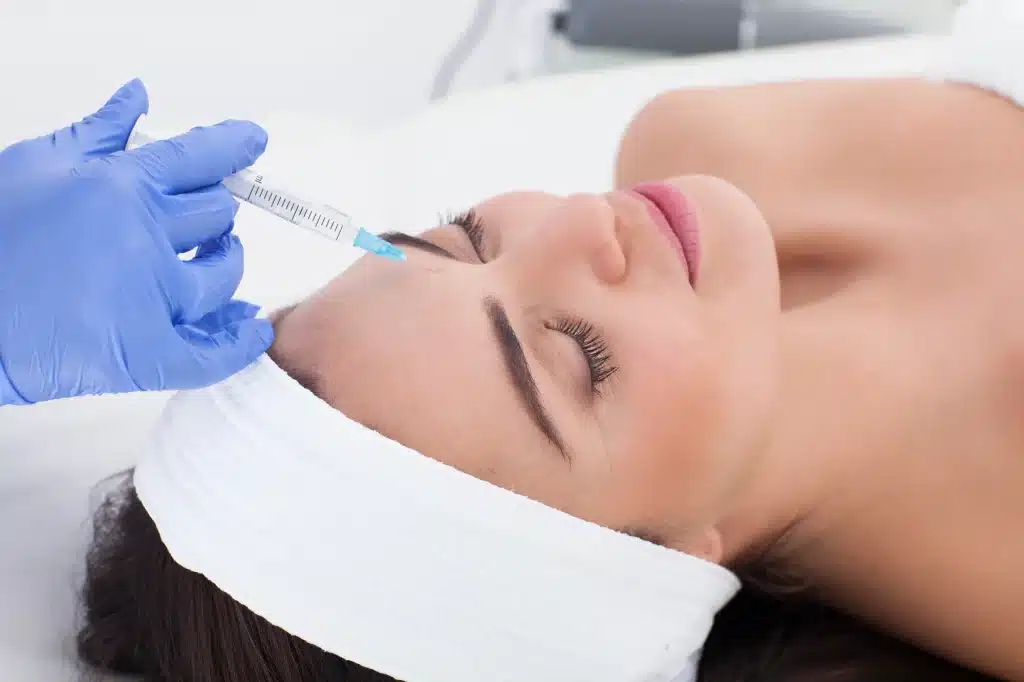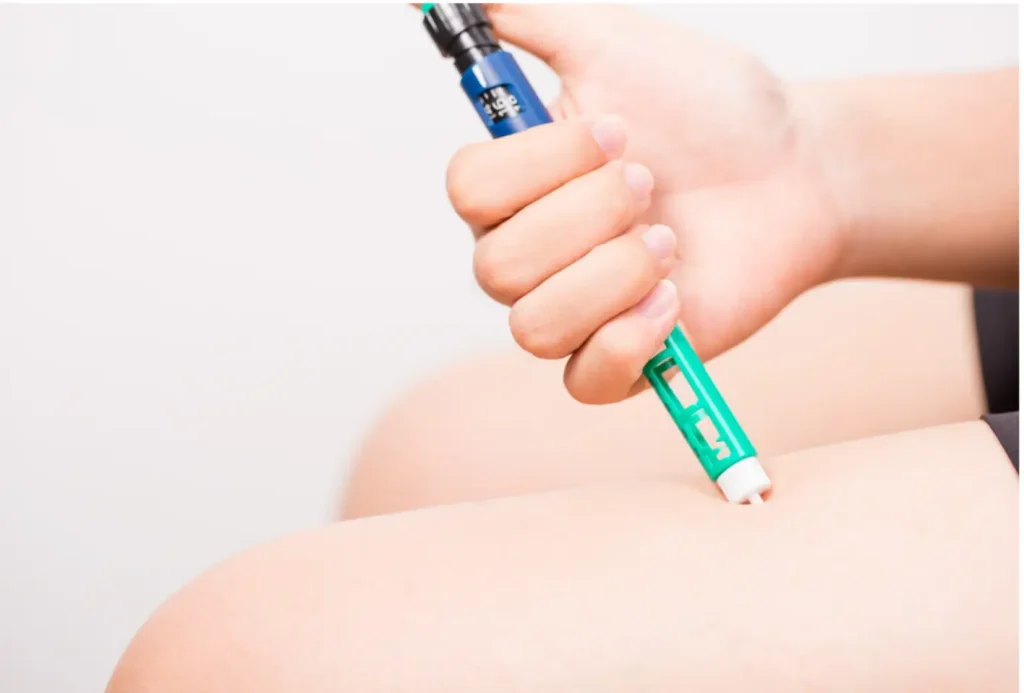Did you know that many of the polynucleotides used in today’s aesthetic treatments are derived from purified salmon DNA? These naturally sourced molecules have gained significant attention in the skincare world due to their high biocompatibility and impressive skin-regenerative properties. Thanks to their ability to promote hydration, elasticity, and skin renewal, polynucleotides are quickly becoming a go-to solution in modern skin rejuvenation.
One treatment that harnesses the power of these potent molecules is Croma PhilArt. Known for its skin texture improvement and radiance-boosting effects, Croma PhilArt has been met with positive feedback from practitioners who highlight its minimal downtime and versatility in enhancing patient results. As it seamlessly complements other aesthetic procedures, Croma PhilArt is rapidly becoming a popular choice in many clinics.
In this article, we’ll dive into Croma PhilArt reviews, explore how this treatment works, and uncover why it’s fast becoming a staple in the world of regenerative skincare.
Key Takeaways
- Croma PhilArt is a polynucleotide-based treatment that stimulates fibroblast activity, resulting in improved collagen and elastin production, which enhances skin texture, hydration, and elasticity.
- Its PN-HPT™ technology delivers anti-inflammatory effects, promotes tissue remodeling, and helps smooth fine lines without adding volume or causing puffiness.
- Croma PhilArt is suitable for a variety of treatment areas, including the face, neck, hands, and scalp, with noticeable improvements often seen after just a few sessions.
- The standard treatment protocol involves 3 sessions spaced 2 to 3 weeks apart, with maintenance sessions every 4 to 6 months, depending on individual patient goals.
- Practitioner feedback highlights high patient satisfaction, with visible results in skin tone, firmness, and hydration. The treatment is praised for minimal downtime and natural-looking results.
- Croma PhilArt is ideal for those seeking gentle skin revitalization without the need for synthetic fillers or invasive procedures.
About: Medical Spa RX provides medical practices with premium products at the best prices. If you’re looking to buy Croma Philart Fillers online for your practice, the sales representatives at Medical Spa RX can give you guidance.
How Croma PhilArt Stimulates Regeneration at the Cellular Level
Croma PhilArt works through PN-HPT™ (Polynucleotide-Highly Purified Technology), a patented system that stimulates the skin’s natural repair mechanisms. Polynucleotides, DNA fragments derived from purified salmon DNA, act as biostimulators, promoting fibroblast activity. These cells are crucial for producing collagen, elastin, and hyaluronic acid, which are fundamental for maintaining skin elasticity, hydration, and overall vitality.
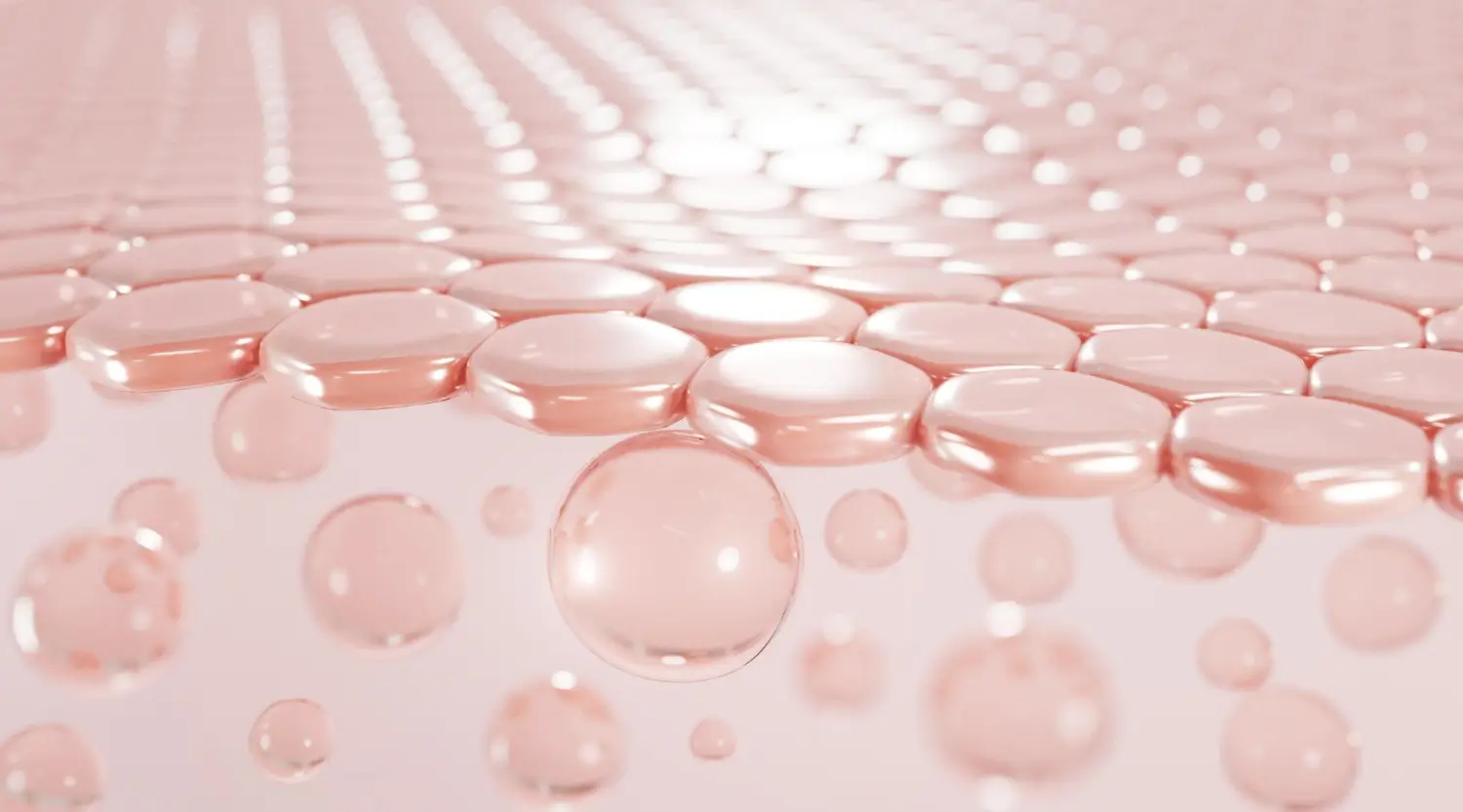
Upon injection, polynucleotides interact directly with fibroblasts, leading to increased collagen and elastin synthesis, which helps restore skin elasticity and hydration. The PN-HPT™ molecules also offer anti-inflammatory benefits, which enhance tissue remodeling and smooth fine lines.
By binding to water molecules, these molecules help hydrate the dermis, improving overall skin quality. Over time, Croma PhilArt promotes structural regeneration, which helps maintain the density and tone of the skin. Importantly, Croma PhilArt does not add volume, making it particularly suitable for patients who seek refreshed skin without the heaviness or puffiness that fillers can sometimes cause.
Croma PhilArt Results by Treatment Area
Croma PhilArt delivers targeted, regenerative benefits across various parts of the body. From facial rejuvenation to improving skin quality on the neck, hands, and even the scalp, each treatment area shows distinct and clinically observed results. Here’s what practitioners and patients have reported:
Face
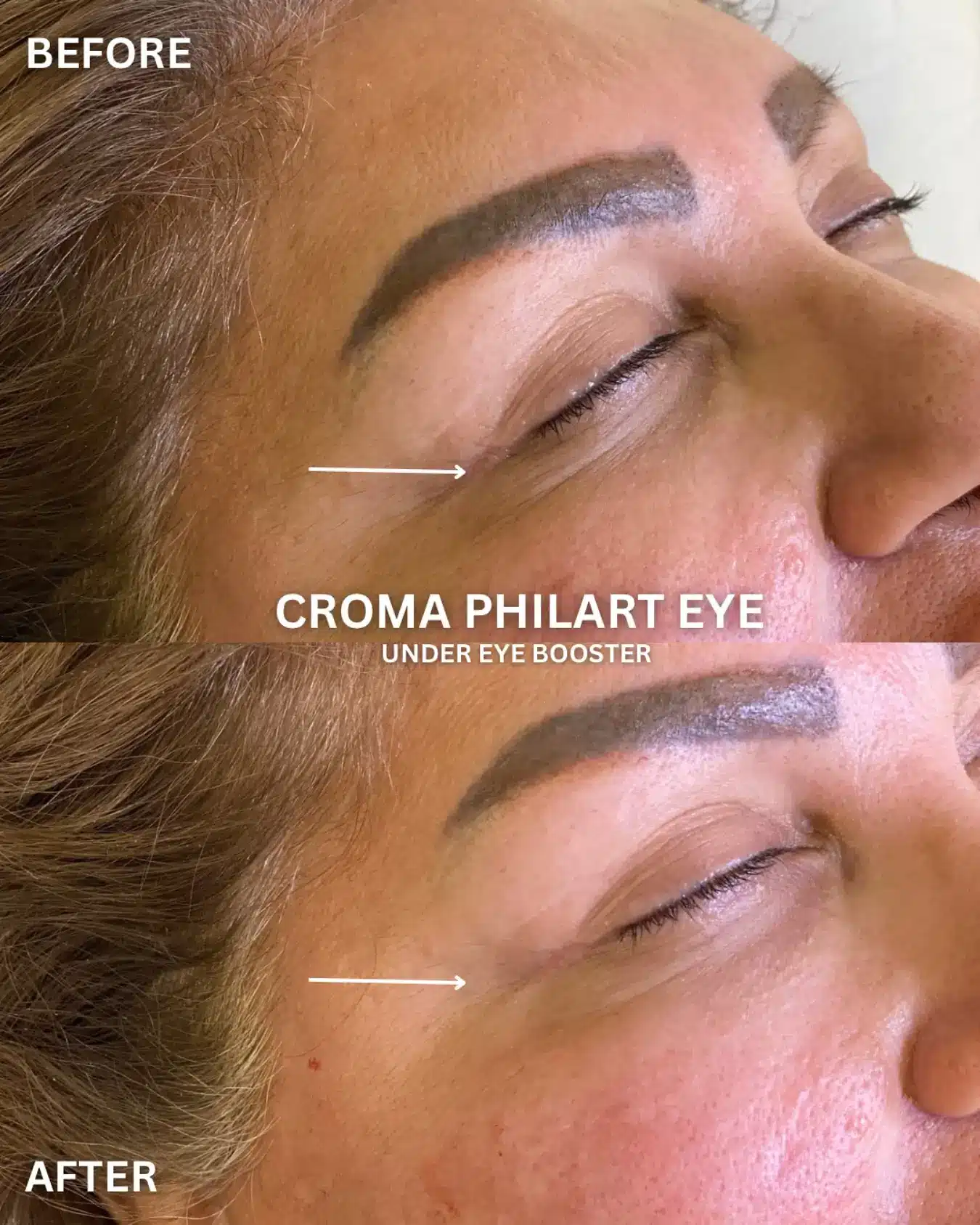
Patients often experience smoother texture, refined pores, and increased radiance within a few weeks. Fine lines, particularly around the mouth and under the eyes, improve with 2 or more sessions.
Neck
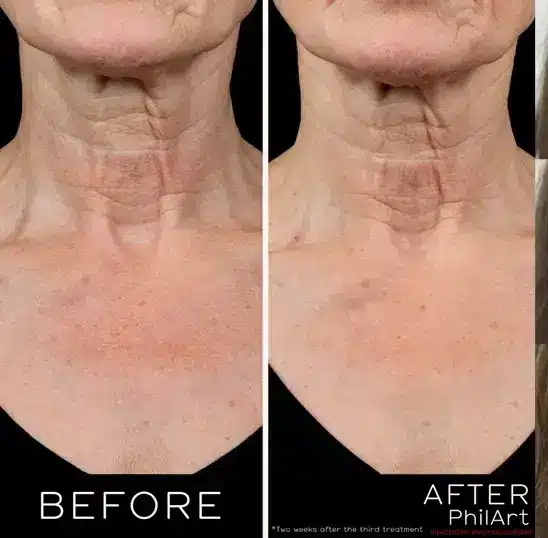
Image Courtesy of Glen Dental
The neck, known for its thin skin, benefits significantly from PhilArt’s regenerative action, particularly in areas that are sun-damaged or crepey. It restores firmness without the risk of overfilling.
Hands
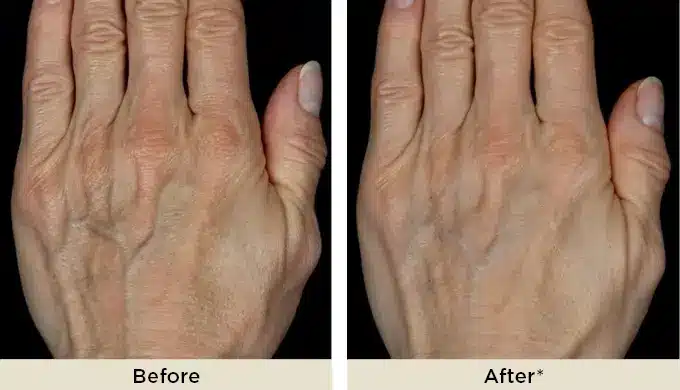
Croma PhilArt is ideal for rejuvenating the hands, where it helps enhance skin thickness and reduces the visibility of veins and tendons, giving a more youthful appearance.
Scalp
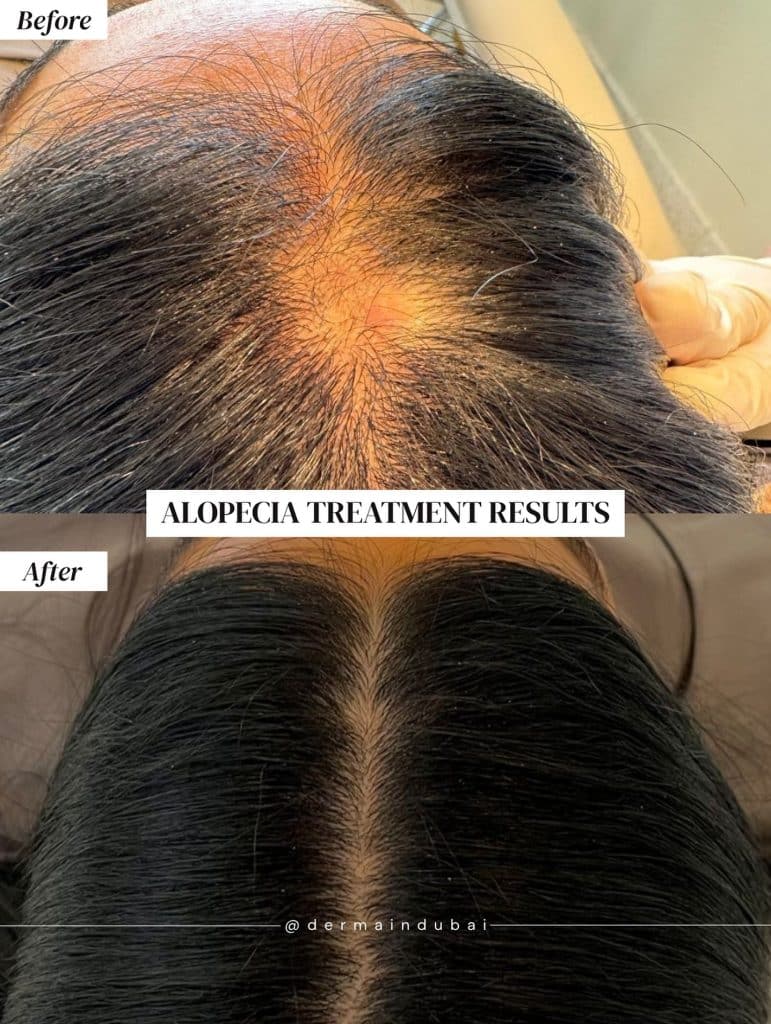
When used in hair restoration protocols, often in conjunction with microneedling, PhilArt shows promising results. Clients report stronger hair shafts and improved scalp health within 6 to 8 weeks.
Results vary between individuals, but typically, 3 sessions spaced 2-3 weeks apart are recommended for noticeable improvements.
What Practitioners Are Saying About Croma PhilArt
Clinicians are increasingly recognizing Croma PhilArt as a standout option in regenerative aesthetics. Its polynucleotide-based formula stimulates fibroblast activity, which enhances collagen and elastin production, crucial for improving skin texture and elasticity.
Many practitioners report high patient satisfaction and visible improvements in hydration, tone, and skin resilience after just a few sessions. According to a 2021 study, these compounds also provide antioxidant benefits, helping neutralize free radicals and support skin renewal. PhilArt’s smooth consistency and ease of injection make it a favorite, especially when used alongside other treatments like microneedling.
When comparing treatments like PhilArt vs Profhilo, many clinicians note that PhilArt tends to offer more precise skin rejuvenation with its polynucleotide technology, compared to Profhilo, which relies on hyaluronic acid for a more generalized hydrating effect. Practitioners appreciate the natural-looking results PhilArt provides with minimal downtime.
Treatment Protocols and Patient Response to Croma PhilArt
The standard protocol for Croma PhilArt involves a course of 3 treatments, spaced 2 to 3 weeks apart. Maintenance sessions are generally performed every 4 to 6 months, depending on the skin condition and the patient’s individual goals. The typical injection technique includes:
- Linear or micro-droplet deposition
- Targeted placement in the mid to deep dermis
- Use of 30G needles or cannulas
Patient response to Croma PhilArt is generally favorable, with most individuals noticing improvements in skin tone and firmness by the second session. However, because results build gradually, it’s essential to manage patient expectations — the treatment offers subtle regeneration, not dramatic lifting.
Many patients report a significant improvement in skin hydration, particularly in dry or aging areas. Satisfaction rates remain high among those seeking gentle skin revitalization without invasive procedures or synthetic fillers.
Conclusion
Croma PhilArt stands out as a reliable, non-volumizing option in regenerative aesthetics, offering consistent results across multiple treatment areas. Thanks to its PN-HPT™ technology, it stimulates skin repair at the cellular level, improving texture, hydration, and firmness over time.
With minimal downtime and high patient satisfaction, Croma PhilArt is a strong choice for those seeking subtle, natural rejuvenation. Compared to other biostimulators li, Croma PhilArt offers a gentle yet effective approach that integrates seamlessly into modern aesthetic practice, particularly for patients focused on long-term skin quality improvement.
FAQs
1. What is Croma PhilArt made of?
It contains polynucleotides derived from purified salmon DNA using PN-HPT™ technology, which stimulates natural skin repair.
2. How long do Croma PhilArt results last?
Results typically last 4 to 6 months. Maintenance sessions are recommended twice a year to sustain benefits.
3. Is Croma PhilArt safe for sensitive skin?
Yes. The formulation is biocompatible and has anti-inflammatory properties, making it suitable for most skin types.
4. Can PhilArt be combined with other treatments?
Yes. It’s often used alongside microneedling, PRP, or botulinum toxin for enhanced outcomes and broader treatment goals.
5. Does it add volume to the face?
No. Unlike fillers, PhilArt does not add volume. It improves skin quality without changing facial contours.
6. What areas can Croma PhilArt treat?
It can target the face, neck, hands, décolletage, and scalp for various regenerative purposes.
7. How soon are results visible?
Many patients see improvements in hydration and tone within two sessions, with more visible results by the third.
References
Lee KWA, Chan KWL, Lee A, et al. Polynucleotides in Aesthetic Medicine: A review of current practices and Perceived effectiveness. International Journal of Molecular Sciences. 2024;25(15):8224. doi:10.3390/ijms25158224
Guerra CJ. Polynucleotides | Salmon DNA | What are they? What are they used for? Carmen J. Guerra. Published December 17, 2024. https://carmenjguerra.com/en/salmon-dna-polynucleotides-what-are-they-for/
Zafar R. Skin treatments incorporating salmon DNA: Procedures using Salmon-Derived DNA for skin rejuvenation and Anti-Aging benefits. Medicalopedia. Published March 29, 2025. https://medicalopedia.org/11641/skin-treatments-incorporating-salmon-dna-procedures-using-salmon-derived-dna-for-skin-rejuvenation-and-anti-aging-benefits/
Croma-Pharma GmbH. Further strengthening its portfolio with PhilArt biostimulators. Published 2023. https://www.cromapharma.com/assets/downloads/croma-pharma-further-strengthening-its-portfolio-with-biostimulators/2303-PhilArt-Business-EN-FNL.pdf






